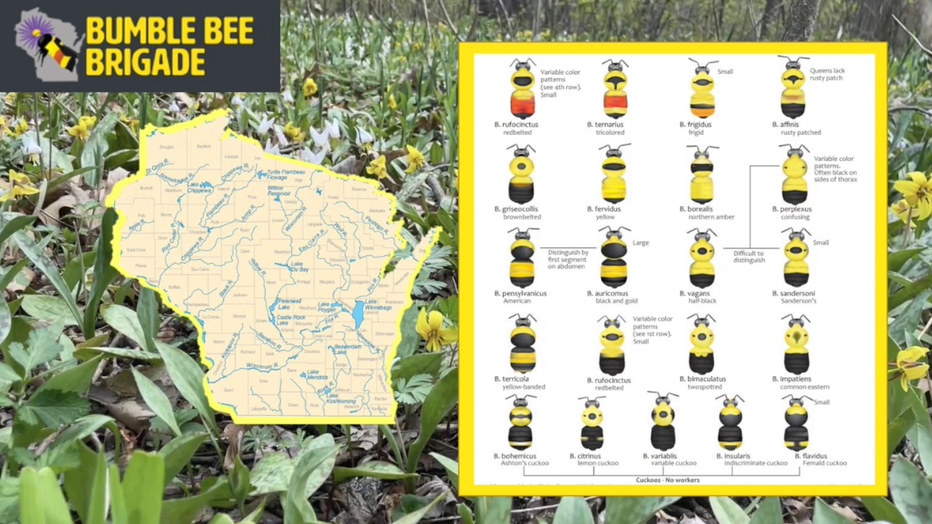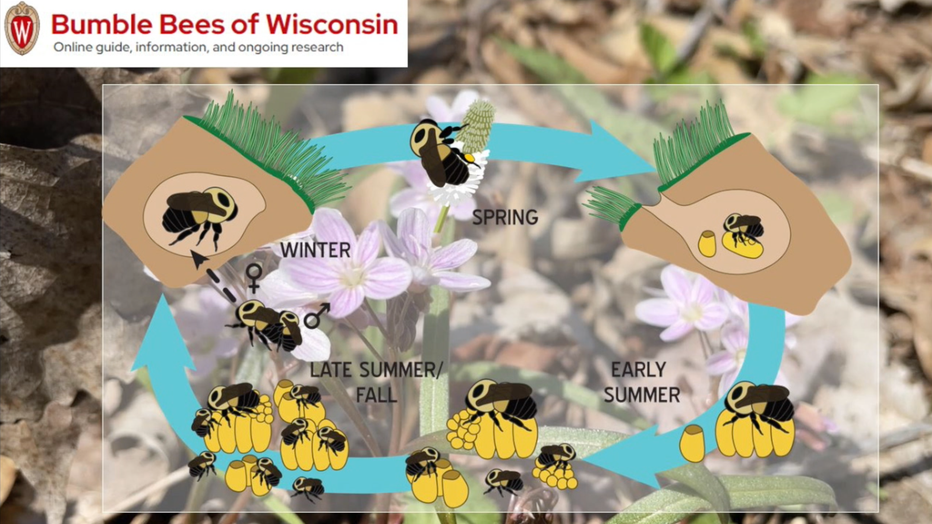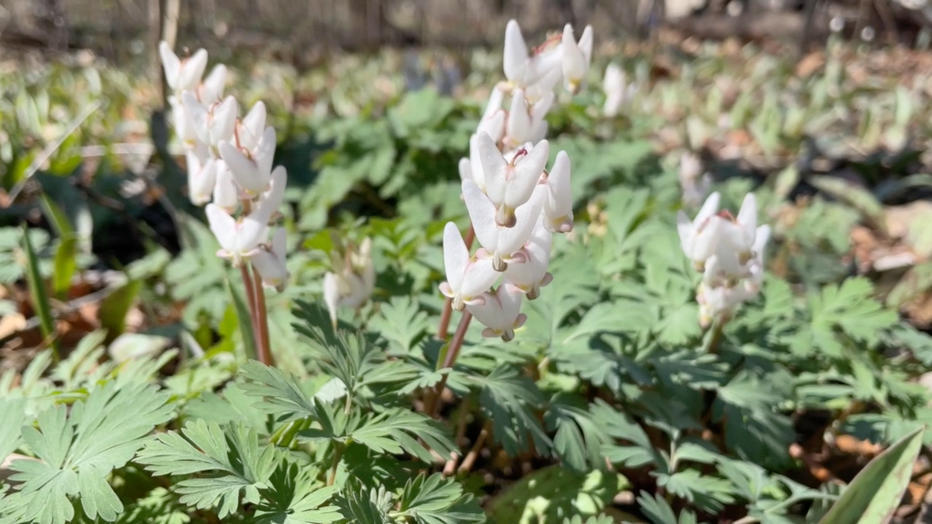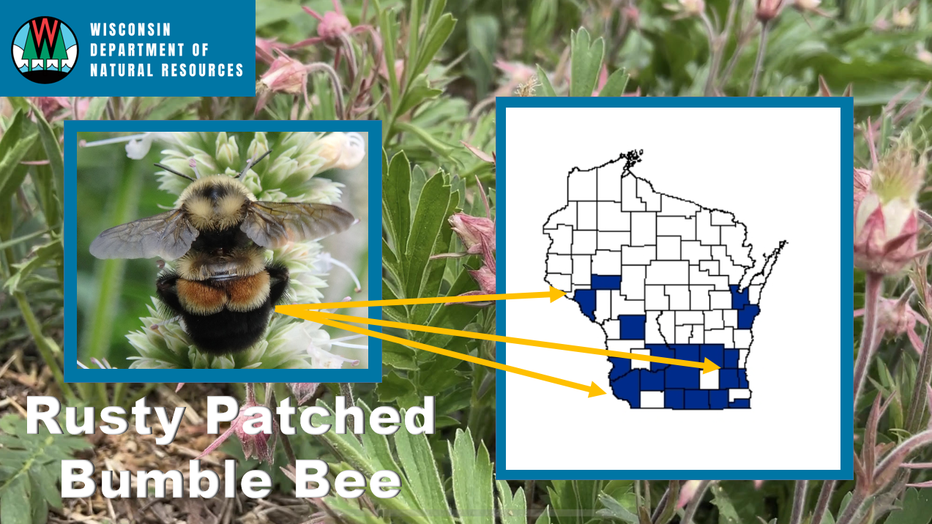Bumble bees' future depends on native spring wildflowers
Bumble bees' future depends on native spring wildflowers
Spring wildflowers are all the buzz come April and May, but without them, nature's hardest worker, the bumble bee, will continue to decline.
MILWAUKEE - If you go for a walk from mid-April through May in an old Wisconsin forest, odds are you may have noticed diverse beds of flowers less than a foot high.
These are spring ephemerals – short-lived flowers, brilliant in color, that attract a host of all kinds of bees. But of Wisconsin's over 300 native species of bee, the bumble bee is our hardest worker. They rely on these spring ephemerals to start their nests.
Looking around your yard, how many native flowers are there for bumble bees? European tulips, daffodils, hyacinth, dandelions and clover didn't evolve with our bees – and don't provide the same nutrition bumble bees need.
SIGN UP TODAY: Get daily headlines, breaking news emails from FOX6 News
"Traditional turf grass lawn, which essentially is a monoculture, that serves almost no habitat," said Kim Forbeck, retired manger of land stewardship at the Urban Ecology Center.
With over 300 bee species in the state, only a couple dozen call the state home. Sadly, many are declining in numbers according to the Wisconsin Bumble Bee Brigade and Wisconsin Department of Natural Resources.

Bumble bee species that call Wisconsin home, trout lily in the background (Courtesy: Bumble Bee Brigade)
It's not hard to see why their numbers are declining when you look at their life cycle. In the fall, future queens – known as gynes – mate with males and then go dormant underground. In the spring, they emerge to begin their own nest and become a queen. But this future queen needs pollen for the larva to feed on, and ephemeral are some of the only flowers they can get this resource from.
Willow and red maple flowers are other early floral resources for them, but invasive species, destruction of rich forests and herbicides put these sensitive ecosystems at risk.
"We have 40% less invertebrates in the last 40 years," according Forbeck.

Life cycle of a bumble bee, spring beauty in background (Courtesy: University of Wisconsin)
Native spring wildflowers evolved with bumble bees to provide food for their nests. Species like Dutchman's breeches need bumble bees because there is no other bee strong enough to enter their flower and pollinate them.
"Bumble bees are some of the best pollinators, and some species of bumble bee choose to nest in sights based on the density and population of the surrounding ephemeral plants," said Michaela Rosenthal, manager of land stewardship at the Urban Ecology Center.

Dutchman's breeches is a species of ephemeral that can only be pollinated by bumble bees strong enough to enter their flower
Certain bumble bee species have declined so much they're even considered federally endangered. The rusty patched bumble bee (Bombus affinis) was once widespread across the eastern United States and now only holds on in small remnants. Many of those remnants are right here in Wisconsin.
Incorporating native ephemerals and wildflowers into your yard could directly help the endangered rusty patched bumble bee. Judy Cardin, a bumble bee citizen scientist, has tailored her entire yard in Madison to help this species.
"Each of us with every flower we plant can make a difference," she said.

A handful of counties have reported rusty patched bumble bee sightings, according to the Wisconsin DNR, in the last few years
A handful of nurseries offer spring wildflowers that can have big impacts on bumble bees – Virginia bluebells, spring beauty, Dutchman's breeches, trout lily, bloodroot, hepatica, bellwort and dozens of species in all.
Prairie Moon Nursery, Prairie Nursery, Prairie Future Seed Company, Johnson's Nursery and Minors Nursery offer a handful of these vital plants.
Waiting to remove leaf litter in spring and dedicating more of your yard to native plants are other ways you can help the bumble bee thrive.

